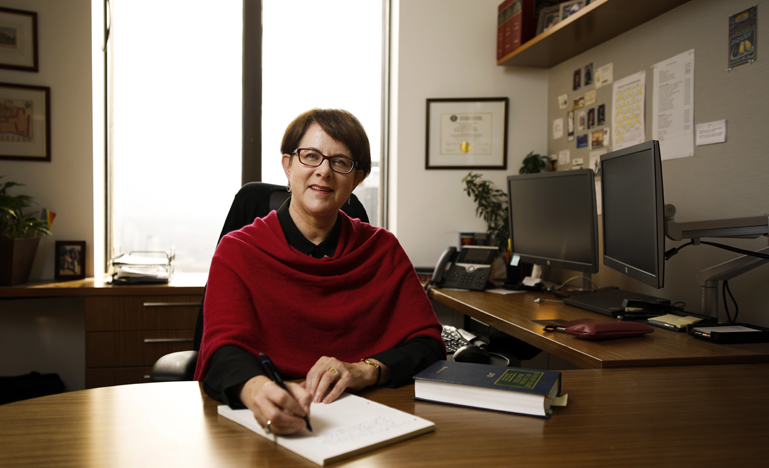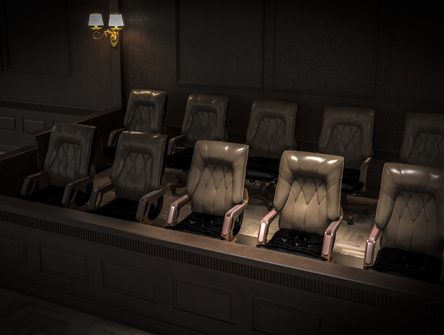The year ahead at the SCC
Lynne Watt tells us what to expect from the SCC in 2020. And some thoughts on what appears to be shaping up as a light winter in terms of the number of appeals scheduled.

We recently sat down with Lynne Watt, a partner in Gowling WLG's Ottawa office, and the leader of the firm’s Supreme Court of Canada Services Group. She gave us a rundown of the significant cases in 2019 and a preview of what to look out for in the coming year at the SCC.
CBA National: What are the key rulings that you're going to be looking out for in 2020?
Lynne Watt: The big one that everybody's waiting for is the standard of review three-pack from last year, of Vavilov/NFL/Bell Canada. They will definitely be of interest to lawyers — admin lawyers, in particular, and anybody who does appellate review, obviously. It's the Supreme Court of Canada, yet again, trying to clarify the standard of review. It seems that the Supreme Court of Canada has a major decision every ten years or so to clarify the standard of review, and figure out how to balance reasonableness and correctness and sliding scales and all that stuff. [Update: The SCC has announced that it will release the standard of review trilogy on December 19, 2019]
N: What are you expecting from the rulings?
LW: One of the key questions is the level or degree of deference the courts should show to specialized tribunals, such as the CRTC. But it's also about when should courts step in and intervene in decisions that the decision-maker, at first instance, have made. And no matter what the Supreme Court of Canada seems to say on standard of review, it always has, at least, an immediate impact on how counsel frame their argument. I don't know that it will really change the state of the law that much. Some cynics might say that courts come to the decisions that they want, and then argue standard of review backwards. I don't think that's accurate. But sometimes that's the perception.
N: What else is on your radar?
LW: There's an interesting case out of Newfoundland and Labrador that's been under reserve since last spring. It's the Attorney General of Newfoundland and Labrador against the Inuit Nation. It's a case dealing with pollution on historical lands of the Inuit that straddles two provinces -- Northern Quebec and Labrador. The question was around the ability to sue in Quebec for damages that were occasioned in Newfoundland and Labrador. And with pollution that crosses borders, how can the courts take jurisdiction or decline jurisdiction to hear a case? And there's a similar case which is going to be heard next year, that's of interest, and that's the Desautel case. It's an indigenous rights case involving the duty to consult and section 35. Desautel was exercising hunting rights, but he was an American, and he crossed the border, exercising historical rights. The question is whether, as a foreign national, he can exercise his hunting rights in Canada.
There's Uber. That's the one that has a lot of interest at the intersection of consumer rights protection, the Employment Standards Act and arbitration. The modern trend in Canadian case law has been very much in favour of arbitration and forcing parties who have arbitration clauses in their contracts to use the arbitration mechanism. The facts in Uber were very difficult to argue, given the way that case was set up, but it shows that the impact of arbitration clauses in contracts of adhesion is a very live issue.
There was also another Francophone education rights case out of B.C. — Conseil scolaire francophone de la Colombie‑Britannique. They're difficult issues that a lot of the provinces are grappling with around language rights, but also economic and funding obligations.
And there was another interesting case this fall — Canadian Coalition for Genetic Fairness; and there's Bent vs. Platnick and Pointes Protection Association, which are anti-SLAPP cases that have attracted large numbers of interveners. In fact, almost all of the ones I've mentioned have involved large numbers of interveners. That seems to be a trend that we're seeing.
N: What does that say to you?
LW: A couple of things. People are interested in the Supreme Court of Canada and what it's doing; and the court is very interested in assessing the impact of its decisions across a wide spectrum of interest. That's not new. But what is new — we saw it at the end of Justice McLachlin's time as Chief Justice, and it certainly continued under the current Chief Justice — is the court's willingness to accept large numbers of interveners, and not to accede to motions to dismiss intervention motions.
N: So what about hearings in 2020?
LW: We now have a few more appeals scheduled but it’s still not a lot: six in January, three in February, three in March, and one in April. They might add a few more but it still looks like it will be a light winter in terms of the number of appeals heard. But the ones that have been scheduled are quite interesting. We have the TMX pipeline reference appeal, out of B.C., and the two big Greenhouse Gas Pollution Act reference appeals out of Saskatchewan and Ontario. They are now scheduled to be heard in March, and an interesting footnote there is whether the Alberta Court of Appeal will have rendered its decision in the Alberta reference on the same constitutional question. We have the Désautel case I mentioned; and Attorney General of Ontario v. G, which has to do with the constitutionality of the Sex Offender Registry Act.
N: Why such a light load for the court?
LW: I don't know. Historically, the court has granted leave, depending on the year, 10,12,13 per cent of the time. Other years, we've seen it go as low as 8 or 9 per cent. This year, I think they're tracking closer to five per cent. It's too soon to say whether it's a trend though.
N: We have a new Justice who's recently been sworn in, from Quebec. Does Kasirer's appointment change the make-up of the court?
LW He brings an academic view, having sat on the Court of Appeal for about ten years, and his time before that at McGill law school. He balances things out, not ideologically so much, but by bringing another academic perspective with Justice Russell Brown already there. Like so many of the other judges, he hit the bench running. I'm mixing my metaphors, but right off the bat, he was asking really intelligent, pointed questions. He's not shy about getting right in there, and he's been very active in all the appeals. But it's way too early, in my view, to discern any particular bent. We know he's beautifully bilingual, and seems to be really interested in many things. So, that's a great addition to the court, but we'll see if that'll change the balance, if at all.
N: Where are we at in terms of consensus on the court? We're seeing a lot of split decisions, aren't we?
LW: I think that's right. We are seeing less unanimity. But when people ask that question, we have to watch out about having an inherent bias against dissent. Dissenting opinions serve a very important purpose. These are nine people who are incredibly bright and who have very, very strong views -- rightly so. The fact that they can't all agree is not necessarily a bad thing. It's nice that we've gotten away from the old-fashioned type of judgment writing, where you have these dense, incomprehensible, multiple numbers of decisions. In most of the cases coming out of the court now, there will be one or two dissents. But they're clear, easy to read, and quite easy to understand.


